Publications
Search publications
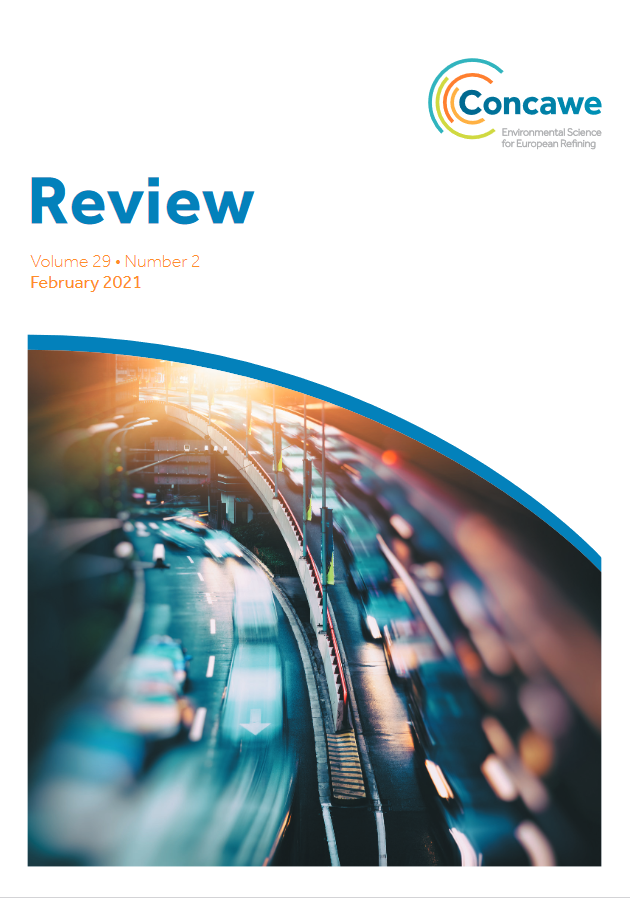
March 4, 2021
Concawe Review 29.2
The move towards climate neutrality is clearly on its way: last year, the European Commission launched its Green Deal; and Japan, the Republic of Korea and more than 100 other countries worldwide have...
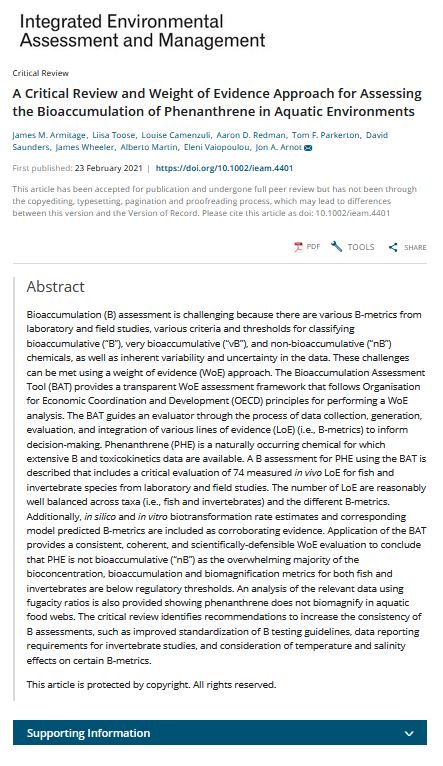
February 23, 2021
A Critical Review and Weight of Evidence Approach for Assessing the Bioaccumulation of Phenanthrene in Aquatic Environments
Bioaccumulation (B) assessment is challenging because there are various B-metrics from laboratory and field studies, various criteria and thresholds for classifying bioaccumulative (“B”) and non-b...
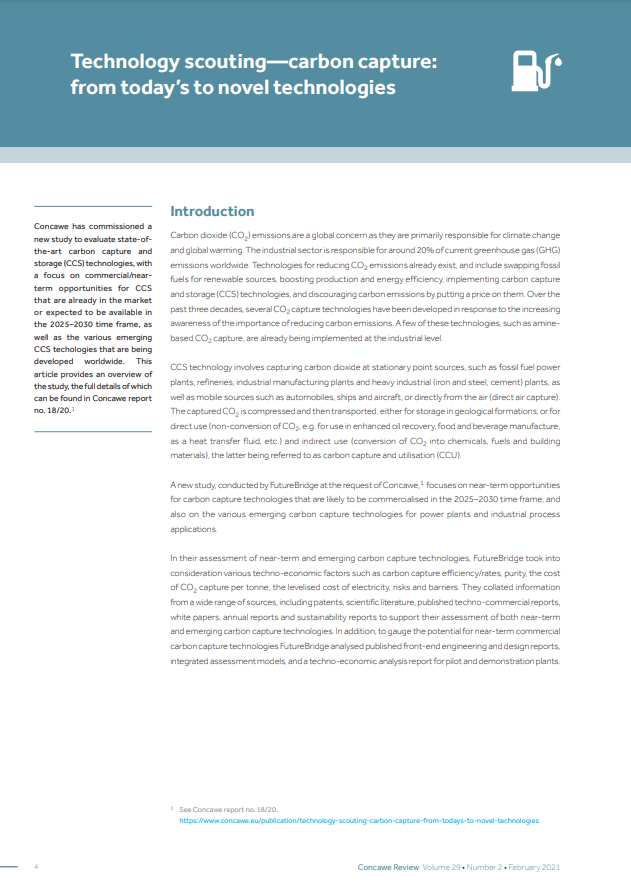
February 17, 2021
Technology scouting—carbon capture: from today’s to novel technologies (Concawe Review 29.2)
Concawe has commissioned a new study to evaluate state-of-the-art carbon capture and storage (CCS) technologies, with a focus on commercial/near-term opportunities for CCS that are already in the mark...
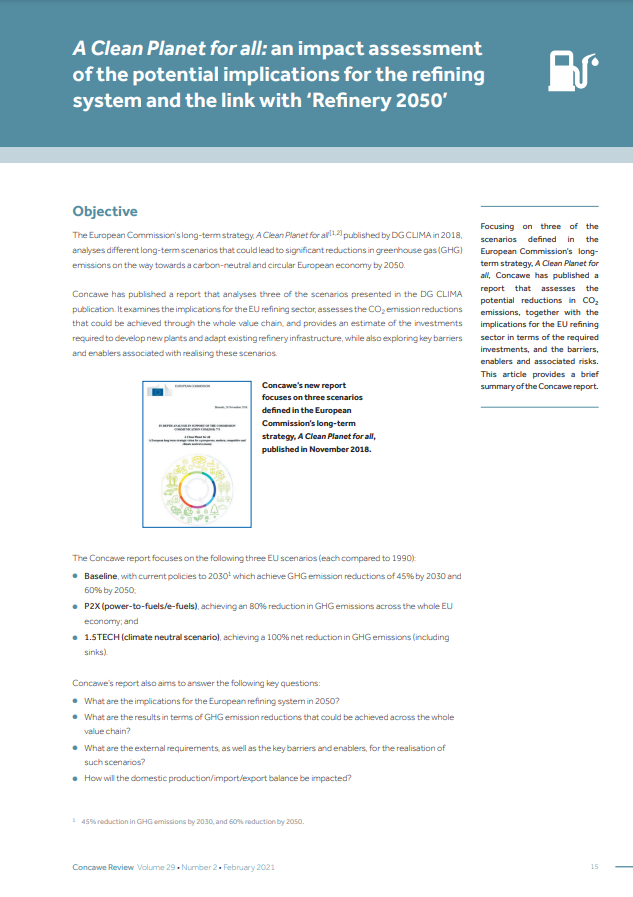
February 17, 2021
A Clean Planet for all: an impact assessment of the potential implications for the refining system and the link with ‘Refinery 2050’ (Concawe Review 29.2)
Focusing on three of the scenarios defined in the European Commission’s long-term strategy, A Clean Planet for all, Concawe has published a report that assesses the potential reductions in CO2 emiss...
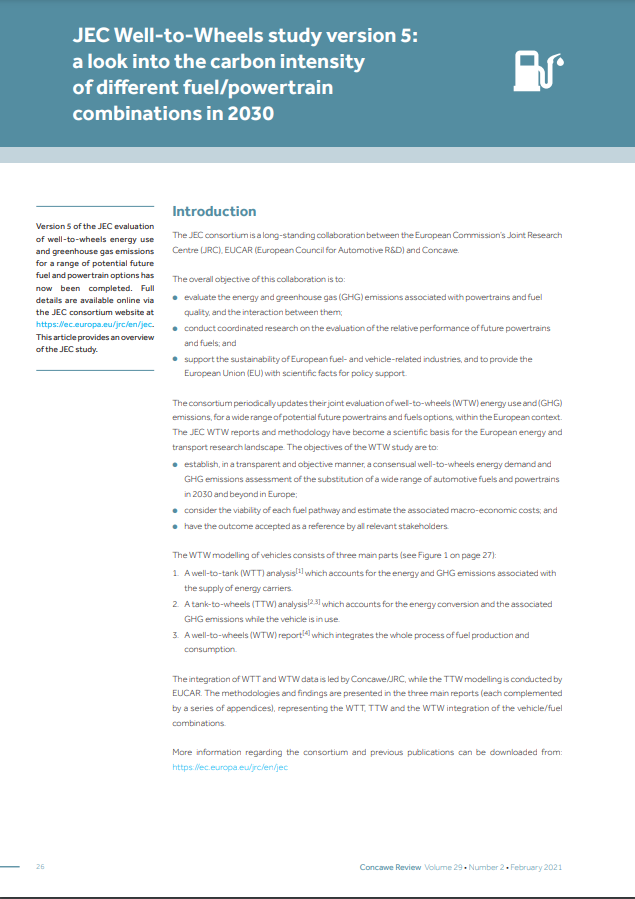
February 17, 2021
JEC Well-to-Wheels study version 5: a look into the carbon intensity of different fuel/powertrain combinations in 2030 (Concawe Review 29.2)
Version 5 of the JEC evaluation of well-to-wheels energy use and greenhouse gas emissions for a range of potential future fuel and powertrain options has now been completed.
Full details are avail...
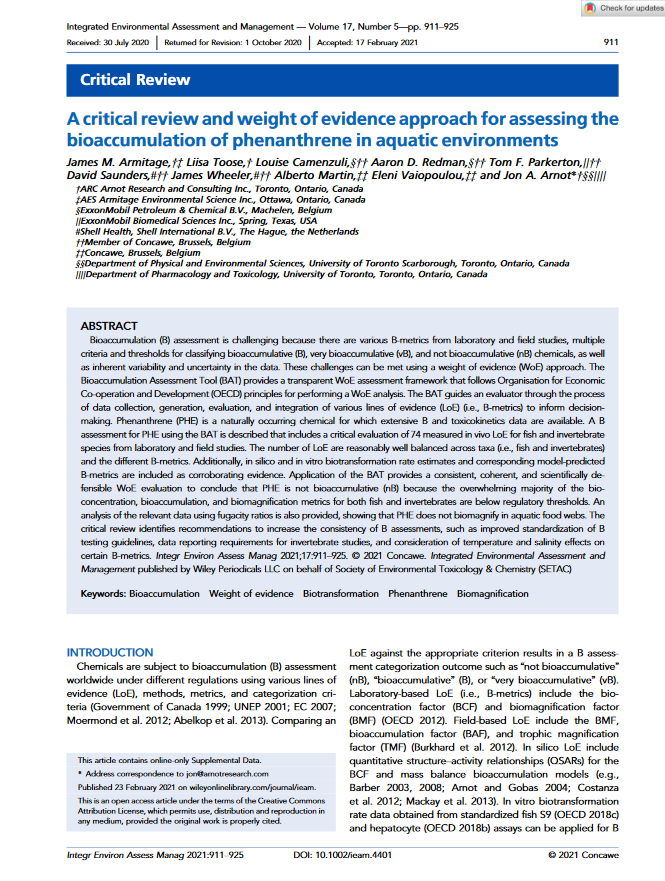
February 17, 2021
A critical review and weight of evidence approach for assessing the bioaccumulation of phenanthrene in aquatic environments
Bioaccumulation (B) assessment is challenging because there are various B‐metrics from laboratory and field studies, multiple criteria and thresholds for classifying bioaccumulative (B), very bioacc...
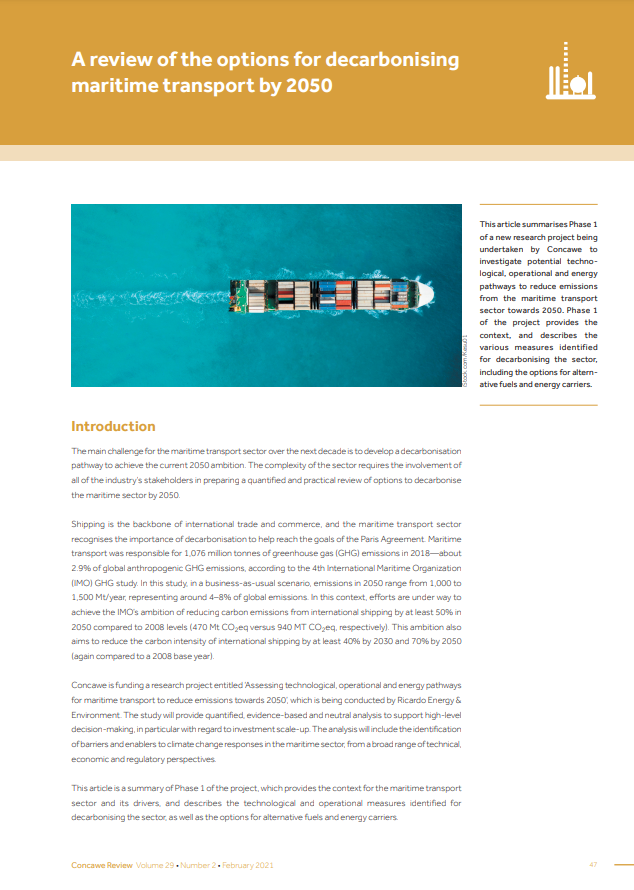
February 17, 2021
A review of the options for decarbonising maritime transport by 2050 (Concawe Review 29.2)
This article summarises Phase 1 of a new research project being undertaken by Concawe to investigate potential technological, operational and energy pathways to reduce emissions from the maritime tran...
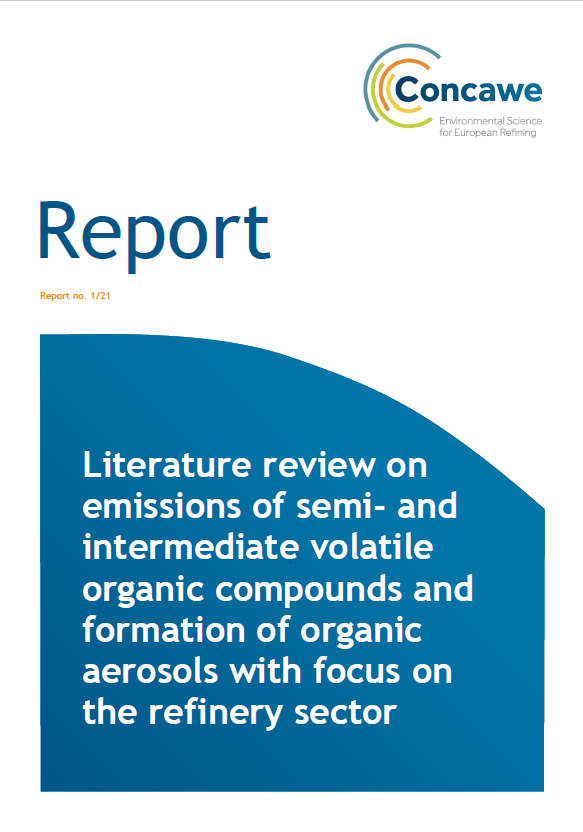
February 12, 2021
Literature review on emissions of semi- and intermediate volatile organic compounds and formation of organic aerosols with focus on the refinery sector
Report no. 1/21: Organic aerosols (OA) are an important component of ambient particulate matter (PM) but their origin and formation is not well understood. Traditionally, OA have been described by two...
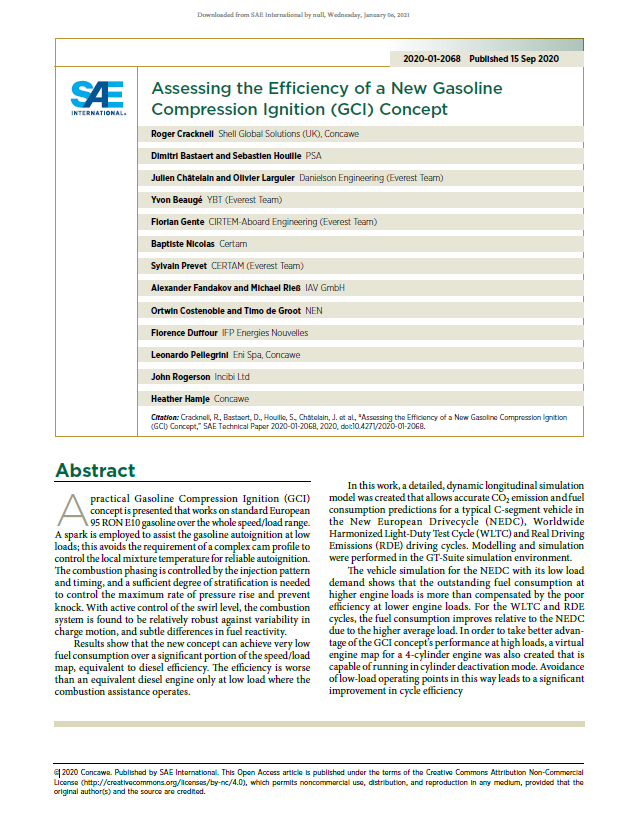
January 7, 2021
Assessing the Efficiency of a New Gasoline Compression Ignition (GCI) Concept
A practical Gasoline Compression Ignition (GCI) concept is presented that works on standard European 95 RON E10 gasoline over the whole speed/load range. A spark is employed to assist the gasoline aut...
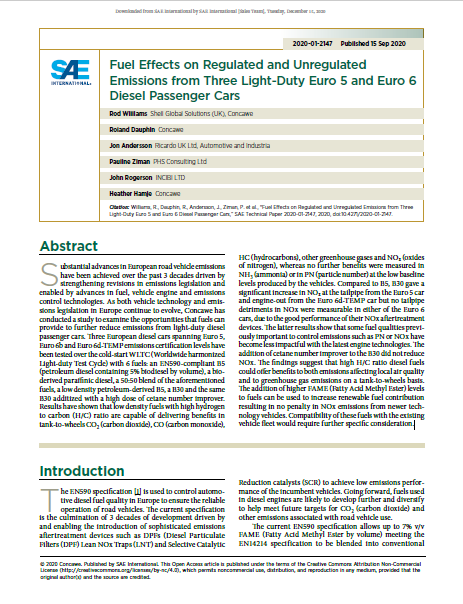
December 17, 2020
Fuel Effects on Regulated and Unregulated Emissions from Three Light-Duty Euro 5 and Euro 6 Diesel Passenger Cars
Substantial advances in European road vehicle emissions have been achieved over the past 3 decades driven by strengthening revisions in emissions legislation and enabled by advances in fuel, vehicle e...
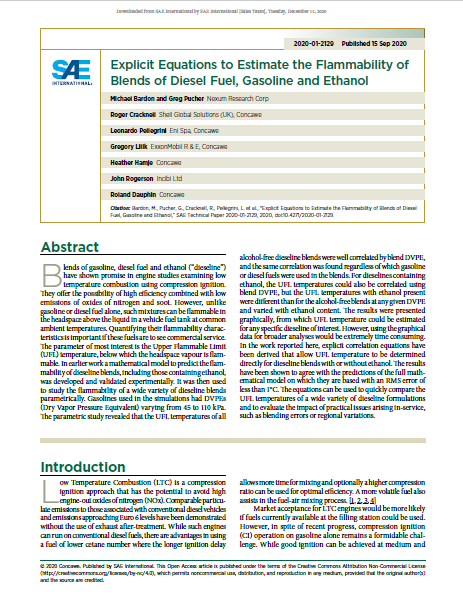
December 17, 2020
Explicit Equations to Estimate the Flammability of Blends of Diesel Fuel, Gasoline and Ethanol
Blends of gasoline, diesel fuel and ethanol (“dieseline”) have shown promise in engine studies examining low temperature combustion using compression ignition. They offer the possibility of high e...
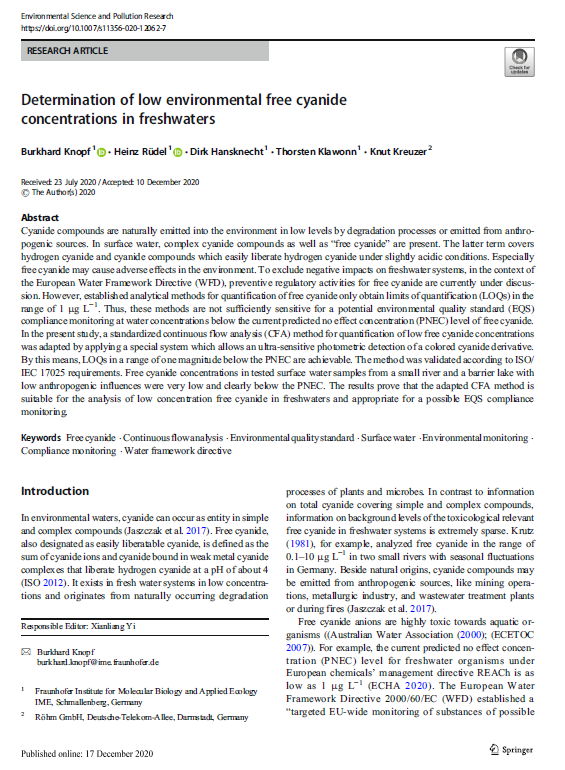
December 17, 2020
Determination of low environmental free cyanide concentrations in freshwaters
Cyanide compounds are naturally emitted into the environment in low levels by degradation processes or emitted from anthropogenic sources. In surface water, complex cyanide compounds as well as “fre...
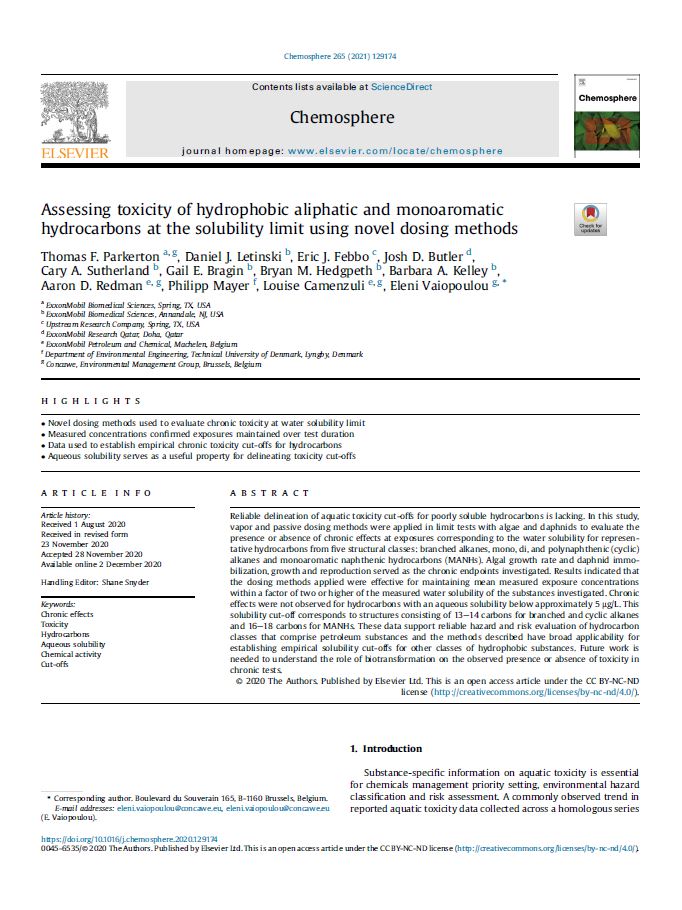
December 3, 2020
Assessing toxicity of hydrophobic aliphatic and monoaromatic hydrocarbons at the solubility limit using novel dosing methods
Reliable delineation of aquatic toxicity cut-offs for poorly soluble hydrocarbons is lacking. In this study, vapor and passive dosing methods were applied in limit tests with algae and daphnids to eva...
December 2, 2020
Assessing toxicity of hydrophobic aliphatic and monoaromatic hydrocarbons at the solubility limit using novel dosing methods
Reliable delineation of aquatic toxicity cut-offs for poorly soluble hydrocarbons is lacking. In this study, vapor and passive dosing methods were applied in limit tests with algae and daphnids to e...
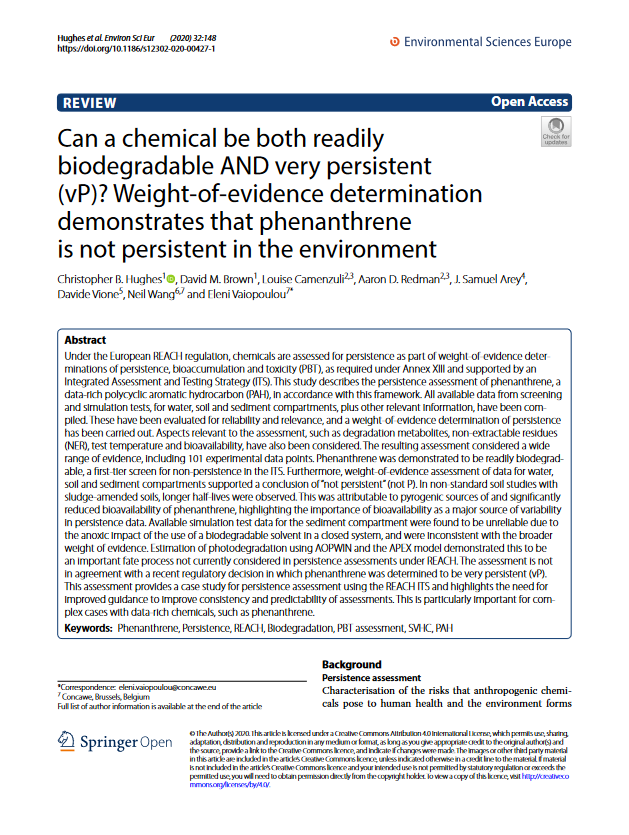
November 10, 2020
Can a chemical be both readily biodegradable AND very persistent (vP)? Weight-of-evidence determination demonstrates that phenanthrene is not persistent in the environment
Under the European REACH regulation, chemicals are assessed for persistence as part of weight-of-evidence determinations of persistence, bioaccumulation and toxicity (PBT), as required under Annex XII...

October 28, 2020
Results of a comparative pilot field test study of a first generation Quantitative Optical Gas Imaging (QOGI) system
Report no. 23/20: Quantitative optical gas imaging (QOGI) is a new system to detect fugitive emission sources and quantify their mass release rates. This report presents an evaluation of QOGI technolo...
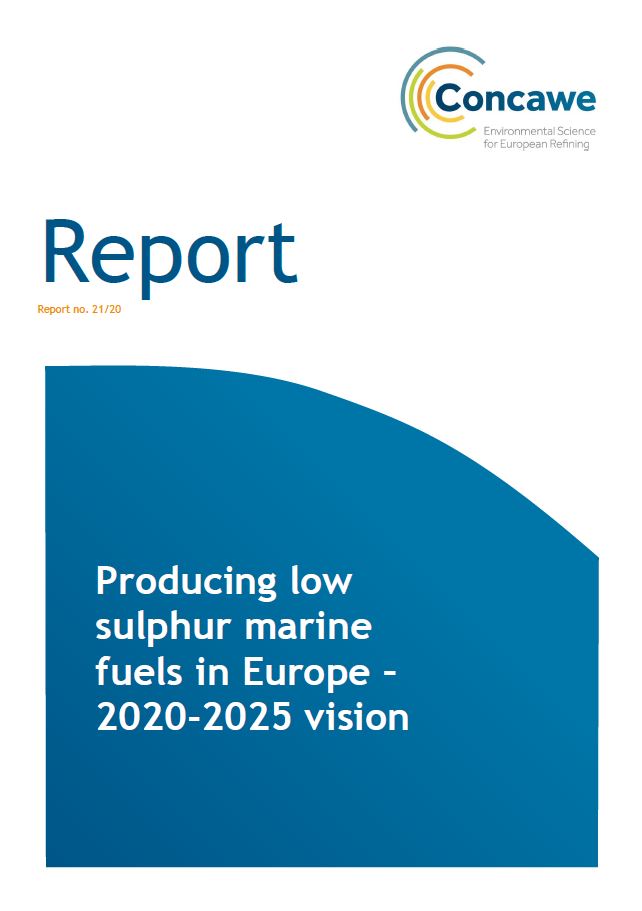
October 20, 2020
Producing low sulphur marine fuels in Europe – 2020-2025 vision
Report no. 21/20: The global Sulphur cap entered into force from the 1st of January 2020, and it is seen by the refinery sector as an unprecedented step evolution for a key specification of one of the...
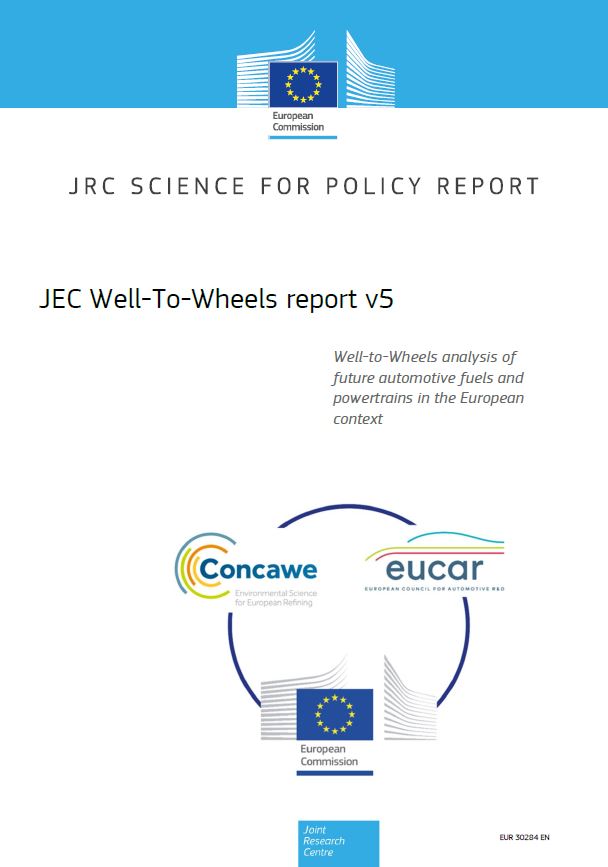
September 25, 2020
JEC Well-To-Wheels v5 related reports (including JEC WTT, TTW & WTW v5)
JRC (the Joint Research Centre of the European Commission), EUCAR and Concawe have updated their joint evaluation of the Well-to-Wheels energy use and greenhouse gas (GHG) emissions for a wide range o...
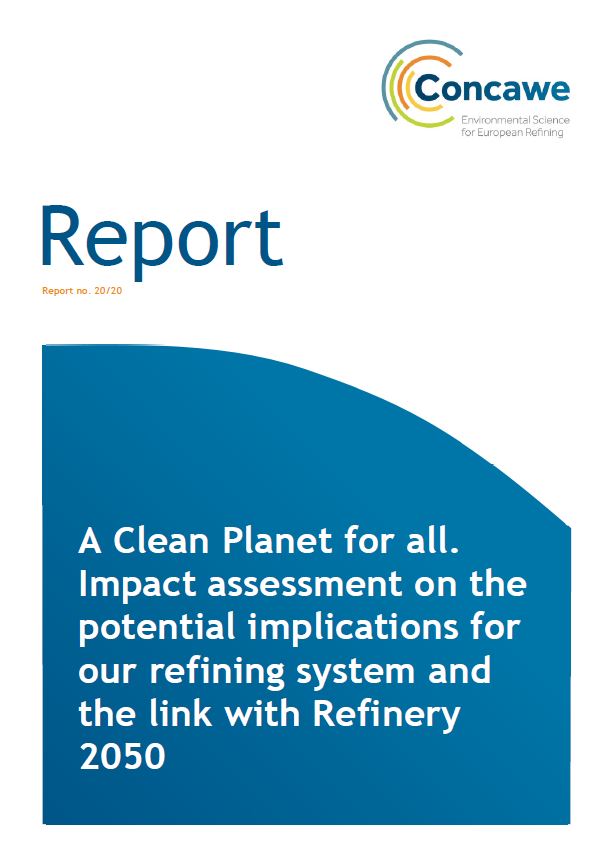
September 22, 2020
A Clean Planet for all. Impact assessment on the potential implications for our refining system and the link with Refinery 2050 (Concawe Report 20/20)
Report no. 20/20: The “A Clean Planet for All” long-term strategy published by the European Commission (DG CLIMA) in 2018 analyses different long-term scenarios that could lead to significant GHG...

September 18, 2020
Effect of environmental conditions and microbial communities on ETBE biodegradation potential in groundwater
Report no. 19/20: This report describes research carried out to determine: a) the environmental conditions which may support Ethyl tert butyl ether (ETBE) biodegradation in groundwater, b) the prevale...
Subscribe to publications
You can subscribe here to receive notifications about new Concawe publications (Technical Reports and the Concawe Review)